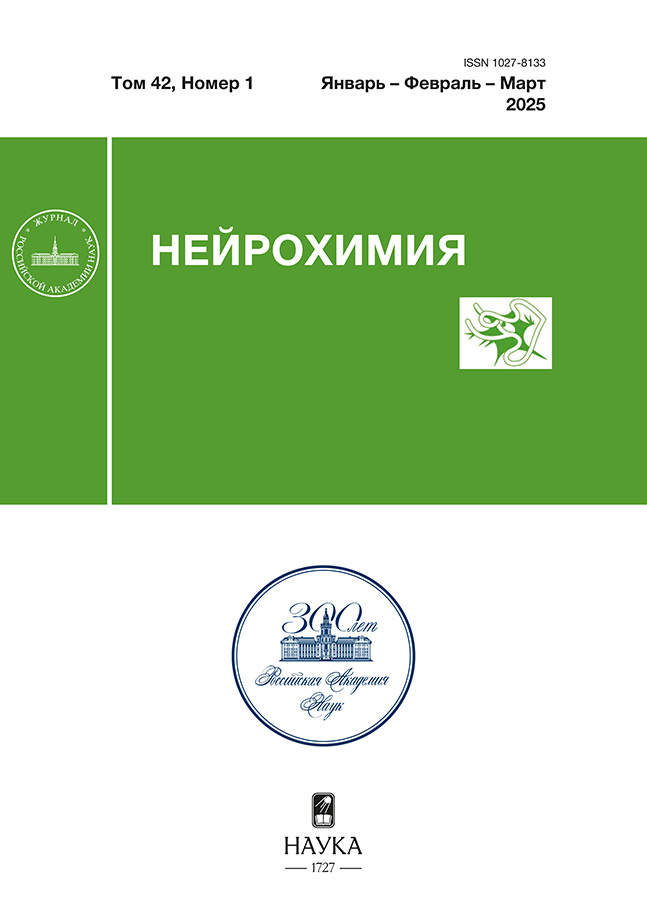Долгосрочная память: роль света и обучения в преодолении стресса у Drosophila Melanogaster
- Авторы: Токмачева Е.В.1, Медведева А.В.1, Щеголев Б.Ф.1, Никитина Е.А.1,2, Савватеева-Попова Е.В.1
-
Учреждения:
- Институт физиологии им. И.П. Павлова РАН
- Российский государственный педагогический университет им. А.И. Герцена
- Выпуск: Том 41, № 4 (2024)
- Страницы: 403-409
- Раздел: Статьи
- URL: https://ter-arkhiv.ru/1027-8133/article/view/653873
- DOI: https://doi.org/10.31857/S1027813324040115
- EDN: https://elibrary.ru/EGFXLW
- ID: 653873
Цитировать
Полный текст
Аннотация
Формирование условной связи позволяет организму изменять свои реакции на различные факторы среды, сочетая и мобилизуя необходимые внутренние адаптивные процессы. Предполагается наличие общих механизмов, лежащих в основе формирования адаптивных процессов – стрессорной реакции и обучения. Для разработки способов неинвазивной коррекции патологий нервной системы на модельном объекте генетики – дрозофиле изучали взаимосвязь адаптивных механизмов формирования условной связи и развития стрессорной реакции на ослабление магнитного поля Земли в условиях свет : темнота. Выявлена роль обучения и освещения в преодолении стресса в связи с формированием долгосрочной памяти в парадигме условно-рефлекторного подавления ухаживания. В рамках квантовой динамики электронных и ядерных спинов переходных состояний радикальных молекул рассматривается гипотеза об их участии в формировании долгосрочной памяти.
Ключевые слова
Полный текст
Об авторах
Е. В. Токмачева
Институт физиологии им. И.П. Павлова РАН
Email: 21074@mail.ru
Россия, Санкт-Петербург
А. В. Медведева
Институт физиологии им. И.П. Павлова РАН
Email: 21074@mail.ru
Россия, Санкт-Петербург
Б. Ф. Щеголев
Институт физиологии им. И.П. Павлова РАН
Email: 21074@mail.ru
Россия, Санкт-Петербург
Е. А. Никитина
Институт физиологии им. И.П. Павлова РАН; Российский государственный педагогический университет им. А.И. Герцена
Автор, ответственный за переписку.
Email: 21074@mail.ru
Россия, Санкт-Петербург; Санкт-Петербург
Е. В. Савватеева-Попова
Институт физиологии им. И.П. Павлова РАН
Email: 21074@mail.ru
Россия, Санкт-Петербург
Список литературы
- Лобашев М.Е. // О направленном формировании свойств высшей нервной деятельности в онтогенезе. Труды I и II совещания “Вопросы физиологии сельскохозяйственных животных”. М.-Л., 1957, с. 33–39.
- Лобашев М.Е., Савватеев В.Б. // Физиология суточного ритма животных. М., Л.: Изд-во АН СССР, 1959. 259 с.
- Agrawal P., Houl J.H., Gunawardhana K.L., Liu T., Zhou J., Zoran M.J., Hardin P.E. // Сurr Biol. 2017. V. 16. P. 2431–2441.
- Karki N., Vergish S., Zoltovski B.D. // Protein Science. 2021. V. 30. № 8. P. 1521–1534.
- Thöni V., Oliva R., Mauracher D., Egg M. // Chronobiology International. 2021. V. 38. № 8. P. 1120–1134.
- Zatsepina O.G., Nikitina E.A., Shilova V.Y., Chuvakova L.N., Sorokina S., Vorontsova J.E., Tokmacheva E.V., Funikov S.Y., Rezvykh A.P., Evgen’ev M.B. // Cell Stress and Chaperones. 2021. V. 26. № 3. P. 575–594.
- Damulewicz M., Mazzotta G.M. // Front Physiol. 2020. V. 11. Art. 99.
- Никитина Е.А., Васильева С.А., Щеголев Б.Ф., Савватеева-Попова Е.В. // Журнал высшей нервной деятельности им. И.П. Павлова. 2022. Т. 72. № 6. С. 783–799.
- Solov’yov I.A., Domratcheva T., Schulten K. // Scientific Reports. 2014. V. 4. Art. 3845.
- Vasilieva S.A., Tokmacheva E.V., Medvedeva A.V., Ermilovа A.A., Nikitina E.A., Shchegolev B.F., Surma S.V., Savvateeva-Popova E.V. // Cell and Tissue Biology. 2020. V. 14. № 3. P. 178–189.
- Kamyshev N.G., Iliadi K.G., Bragina J.V. // Learning and Memory. 1999. V. 6. № 1. P. 1–20.
- Журавлев А.В., Никитина Е.А., Савватеева-Попова Е.В. // Успехи физиол. наук. 2015. Т. 46. № 1. С. 76–92.
- Redt-Clouet C., Trannoy S., Boulanger A., Tokmatcheva E., Savvateeva-Popova E., Parmentier M-L., Preat T., Dura J-M. // European Journal of Neuroscience. 2012. V. 35. Р. 1684–1691.
- Никитина Е.А., Журавлев А.В., Савватеева-Попова Е.В. // Интегративная физиология. 2021. Т. 2. № 1. С. 49–60.
- Никитина Е.А., Медведева А.В., Герасименко М.С., Проников В.С., Сурма С.В., Щеголев Б.Ф., Савватеева-Попова Е.В. // Журнал высшей нервной деятельности им. И.П. Павлова. 2017. T. 67. № 2. C. 246–256.
- Ortega-de San Luis C., Ryan T.J. // JBC Reviews. 2022. V. 298. № 101866. P. 1–23.
- Surma S.V., Belostotskaya G.B., Shchegolev B.F., Stefanov V.E. // Bioelectromagnetics. 2014. V. 35. P. 537–546.
- Stutzmann G.E., Mattson M.P. // Pharmacol Rev. 2011. V. 63. № 3. P. 700–727.
- Медведева А.В., Реброва А.В., Заломаева Е.С., Тураева С.К., Никитина Е.А., Токмачева Е.В., Васильева С.А., Щеголев Б.Ф., Савватеева-Попова Е.В. // Журнал эволюционной биохимии и физиологии. 2022. Т. 58. № 1. С. 34–42.
- Zhang B., Lu H., Xi W., Zhou X., Xu S., Zhang K., Jiang J., Li Y., Guo A. // Neuroscience Letters. 2004. V. 371. P. 190–195.
- Yu C-J., Gao Y., Willis C.L., Li P., Tiano J.P., Nakamura P.A., Hyde D.R., Li L. // Journal of Neuroscience Research. 2007. V. 85. P. 488–496.
- Dusik V., Senthilan P.R., Mentzel B., Hartlieb H., Wülbeck C., Yoshii T. et al. // PLoS Genet. 2014. V. 10. № 8. Art. e1004565.
- Inami S., Sato S., Kondo S., Tanimoto H., Kitamoto T., Sakai T. // Journal of Neuroscience. 2020. V. 40. № 7. P. 1427–1439.
- Yin J.C.P., Cui E., Hardin P.E., Zhou H. // Front Syst Neurosci. 2023. V. 17. Art. 1129152.
- Sarimov R.M., Serov D.A., Gudkov S.V. // Biology. 2023. V. 12. Art. 1513.
- Rodgers C.T., Hore, P.J. // Proceedings of the National Academy of Sciences of the United States of America. 2009. V. 106. P. 353–360.
- Abeyrathne C.D., Halgamuge M.N., Farrell P.M. // World Acad Sci Eng Tech. 2010. V. 64. P. 18‒23.
- Nair P.S., Zadeh-Haghighi H., Simon C. // Scientific Reports. 2024. V. 14. Art. 3628.
- Thoeni E.Y., Dimova Т., Kietzmann R.J., Usselman M. // Redox Biol. 2024. V. 72. Art. 103152.
- Karovetskaya D.M., Medvedeva A.V., Tokmacheva E.V., Vasilyeva S.A., Rebrova A.V., Nikitinа E.A., Shchegolev B.F., Savvateeva-Popova E.V. // Neurochemical Journal. 2024. V. 18. № 1. P. 36–46.
Дополнительные файлы














